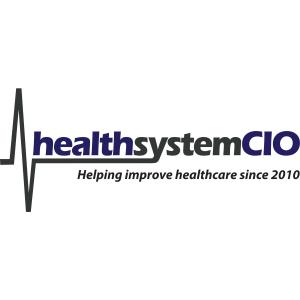healthsystemCIO.com

Podcast Interview with CIO Jason Wood, Part 2: “We Need to Focus on Why We’re Doing This.”
For healthcare IT leaders, prioritization and resource allocation can be challenging under normal circumstances (that is, if there is such a thing). But when a global pandemic hits, it graduates to a new level. As teams log 100-hour weeks to ensure patients can receive care, whether it’s virtually or at converted clinics, CIOs must decide which projects — if any — can be postponed, and how to proceed. Sometimes the answer is none, as was the case for the Northwest region of OptumCare. If the “massive conversion” planned to bring up an organization on Epic was delayed, it would have resulted in a snowball effect, according to CIO Jason Wood. Recently, Wood spoke with healthsystemCIO about the approach his team has taken with project planning, his team’s initial response when Covid-19 hit, and how they’re dealing with the ramifications. He also shared lessons learned, and discussed the keys to leading through a crisis. LISTEN HERE USING THE PLAYER BELOW OR SUBSCRIBE THROUGH YOUR FAVORITE PODCASTING SERVICE. Key Takeaways * For OptumCare Northwest, 2020 was already projected to be a busy year, with several “massive projects.” Pushing them back to deal with Covid simply wasn’t an option. * An important component of crisis management is evaluating what worked well and what didn’t, and what can be replicated. * Sometimes just explaining the ‘why’ isn’t enough; leaders have to cite examples. In OptumCare’s case, it was a patient whose life was saved when a monitoring tool alerted caregivers to the fact that they had to access to insulin. * Don’t underestimate the role of communication, particularly during difficult times. And that means offering reassurance, while also providing as much information as possible about impending changes. Q&A with Jason Wood, Part 2 (Click here to view part 1) Gamble: Is it challenging trying to get the right messaging out to consumers, especially when they’re being inundated with Covid information? Wood: Yes. It was pretty interesting; we got to a point where we were telling patients, ‘Don’t come see us. Don’t come in and get care.’ We absolutely were at that point. We would see models coming out of analytics, and I can recall sitting in these huddles, looking at the data, and the hairs on my arms were standing up. I was getting goosebumps just looking at charts. We were looking at what week in March the hospitals were going to hit capacity, and the graph kept going up, which means a lot of people weren’t going to get into the hospitals. And we know, based on what we saw in Italy, that’s when the death rate just skyrockets. It was pretty intense. Gamble: Did leaders from other organizations reach out to you to learn how you were dealing with it? With Washington being the first hot spot, I imagine you had some leaders from East Coast organizations contact you and get whatever knowledge they could. Wood: Absolutely, mostly within Optum. We have groups in Boston, New York, Texas, and Florida — we’re scattered throughout the country. We had huddles throughout the week with colleagues from those organizations where we shared what was going on here and how we were converting those FURI clinics. A number of folks on the calls, especially my counterparts in New York and Boston, were very inquisitive,






 Visit Podcast Website
Visit Podcast Website RSS Podcast Feed
RSS Podcast Feed Subscribe
Subscribe
 Add to MyCast
Add to MyCast